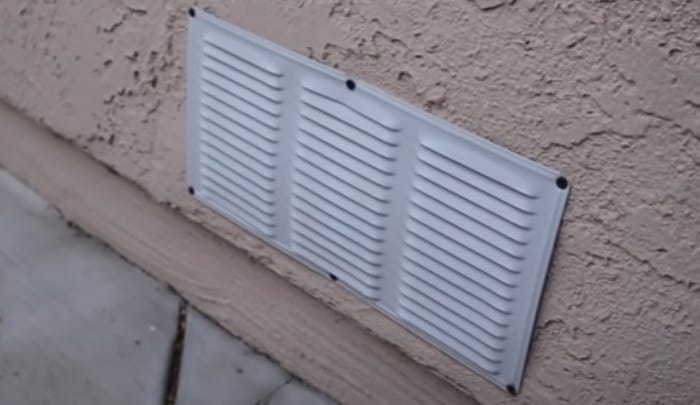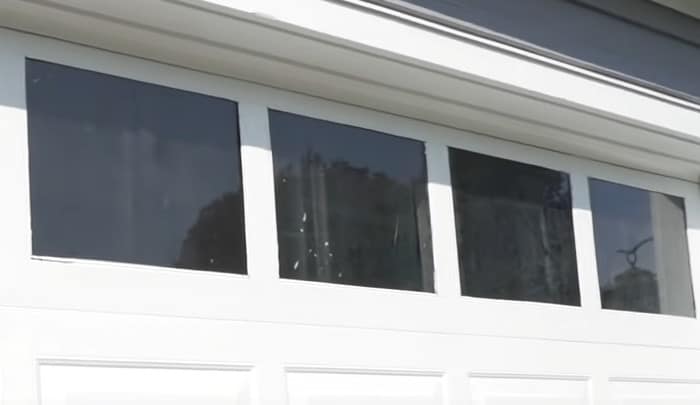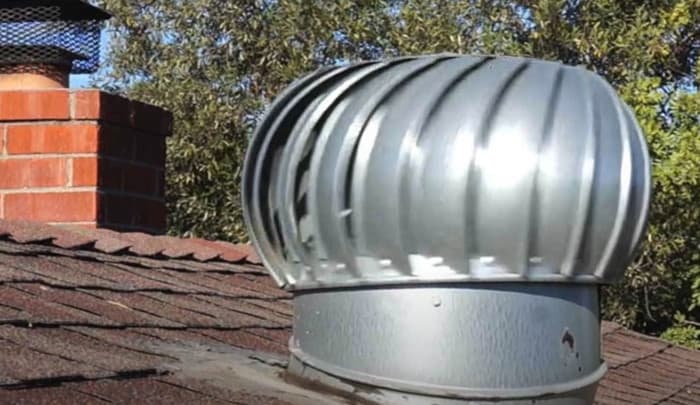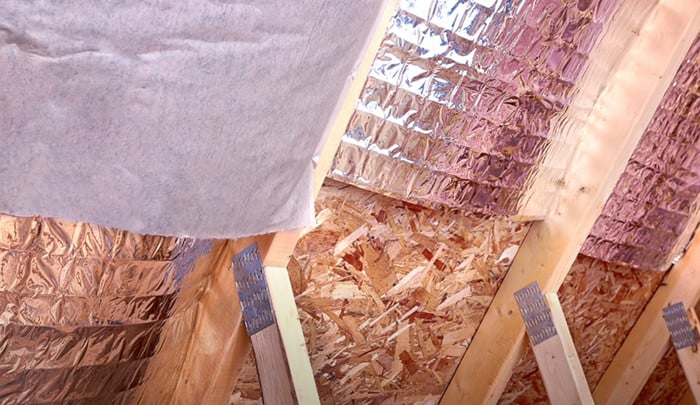Ah, the garage: that mysterious room of the house which contains everything from seasonal decorations and old furniture to tools, sports equipment, and the occasional spider (scary!). But do you ever pay attention to the airflow in your garage? In this blog post, we’ll take a look at how to maximize ventilation in your garage AND keep spiders at bay (which might require a separate blog post!). From understanding why ventilation is important to implementing it in your own garage, this post will have you breathing easy (literally!). So, without further ado, let’s get into the best tips and tricks for ventilating your garage!
To properly ventilate your garage, you should install an exhaust fan, keep windows open, and use louvers in the right places. If necessary, consider the installation of additional vents in order to allow for more air circulation and minimize humidity buildup.
“Always remember, garage ventilation is not a one-size-fits-all situation. Several factors must be considered including the size of the garage, the climate, and the garage’s main use. The key is to create a balance between the inward and outward airflow for a constant cycle of fresh and clean air. As someone who has spent three decades in this field, I can assure you, proper ventilation has a significant impact on your garage’s air quality and overall home environment.”
Jasper Griffith, HVAC Systems Specialist
Ventilation Basics
Properly ventilating a garage is essential for ensuring adequate airflow and reducing buildup of toxins and gases. In general, it is recommended that garages be properly ventilated to protect the air quality and to reduce issues such as condensation, mold, and paint fumes.
There are a few ways to achieve good ventilation in a garage; opening windows and doors, using an exhaust fan or introducing natural ventilation with vents. Opening windows to increase airflow can be effective but won’t exchange the air inside of the garage with fresh outdoor air. Similarly, while a fan can create movement of air inside the garage it uses energy and doesn’t necessarily bring in fresh outdoor air. Natural ventilation with vents will not only draw fresh outdoor air in but won’t require the use of energy to operate either.
As always, there are both benefits and drawbacks to each option for achieving proper ventillation. For example, when opting for natural ventilation this will usually require more upfront investment than other methods but have lower running costs over time. Similarly, an exhaust fan will require less upfront cost but could lead to higher electricity bills from operating it frequently or at an inefficient setting.
Ultimately however, determining the best approach for your specific situation will come down to taking into consideration factors such as your budget, local climate, type of materials stored in the garage, level of contamination in the garage environment, etc. Knowing these details can help you choose what you think is the best solution in terms of your individual needs.
Now that we’ve discussed the basics of ventillation let’s move on to discussing how you could create an air exchange within your garage space.

Create an Air Exchange
Creating an air exchange is key to achieving optimum ventilation in the garage. In addition to the typical standard opening, or multiple openings (if feasible) it is important to consider adding either incoming or outgoing airflow devices. This is particularly important when you insulate garage ceiling rafters, as it helps maintain proper air circulation. This will greatly enhance the flow of air throughout the garage and aid in overall ventilation.
What type of incoming or outgoing device, however, is not so straightforward as there are advantages and disadvantages, as well as suitable locations for such measures depending on the size, shape and layout of the garage. For example, louvered doors both offer a source of natural air flow and can provide protection by sealing off the space when required. On the other hand, they do not create as powerful a flow of air as a fan will. Similarly, one could choose to install an additional door with a window or a fan vent in order to provide ventilation via an artificial source but this does increase cost and complexity during installation and may compromise security.
The type of device, its location within the garage and configuration will depend upon; budget available, area size, shape and location of entrances / exits points and potential sources of interference (drafts from nearby walls). It is therefore recommended that professional advice be taken if unsure about what course of action to take.
Ultimately, introducing some form of air exchange will help to promote healthy circulation within the garage and reduce any buildup of heat and moisture that can otherwise cause damage to tools and machinery over time.
Moving on to the next step in optimizing your garage’s airflow – installing an exhaust fan – could be the most effective solution for creating a healthier environment while also helping maintain temperatures suitable for both people and equipment alike.
Install an Exhaust Fan
The installation of an exhaust fan can be an effective way to ventilate your garage. These fans create an airflow system by sucking the cooled air from outside and pushing the hot air from inside out. This will help to maintain a comfortable temperature in your garage and reduce the need for air conditioning. To ensure proper ventilation, you should install the fan at least 12 inches above the highest point in the room or slightly higher depending on your ceiling height.
When purchasing an exhaust fan for your garage, there are a few important factors to consider. The size of the fan should correspond with the cubic footage of the garage to achieve maximum airflow efficiency. Additionally, you should purchase a fan that is “direct drive” complete with totally enclosed motors and balanced impellers for quiet operation. It is also important to make sure that the exhaust fan is properly sealed to prevent drafty air leaks.
Installing an exhaust fan can be a cost-effective way to provide great ventilation in your garage, but it is not right for everyone. If a powerful enough unit is not purchased, it may not provide complete ventilation for larger garages. Additionally, depending on where your garage is located or its current condition, ducting may need to be installed or modified to enhance ventilation quality further.
Therefore, before deciding whether or not installing an exhaust fan is worth it for you, consider your budget and garage size as well as any upgrades needed before installation begins.
Now that you have considered installing an exhaust fan, let’s take a look at how opening windows can create adequate ventilation in your garage in our next section.
Open Windows
Although you may have heard of allowing fresh air into a garage by opening windows, there is much debate when it comes to the most effective way to do this. On one hand, leaving windows open during the day can lead to unacceptable levels of noise pollution entering a space. It also allows insects such as flies and mosquitoes to come in. Additionally, inclement weather can damage stored items due to fluctuating temperatures.
On the other hand, an open window or two could be a cost-effective way to maintain air circulation in a properly insulated garage with reduced noise levels. Opening windows provides additional light and allows fresh air sources which can reduce total humidity levels in a space.
No matter how you decide to address ventilation, be sure that your openings are not violating any local building codes and that they are properly screened to keep out pests if necessary.
In order to make an enlightened decision when it comes to open windows in your garage, consider all options and weigh their pros and cons. With that being said, the next step for maximum airflow for your garage is choosing the right ventilation system.
- According to the Energy Star Program, garages need at least 1 square foot of ventilation for every 150 square feet of garage space.
- According to The Family Handyman, in order to keep the temperature comfortable in a two-car garage, it needs to be vented with two 4-inch diameter vents or four 2-inch diameter vents.
- Installing ceiling fans in your garage can also help circulate the air and reduce humidity levels while keeping temperatures more comfortable.

Choose the Right Ventilation System
Choosing the right ventilation system for your garage is essential to maintain optimal airflow and remove pollutants. The three main types of ventilation systems are natural, mechanical, and balanced. Each of these systems can help improve air circulation in your garage.
Natural vents such as open windows or doors can provide adequate airflow if you have a large enough opening. However, they offer limited control of temperature and humidity, so this method often requires additional retrofits including insulation.
Mechanical ventilation with an exhaust system typically consists of an in-line fan or wall fan forced into an external vent or louvers. This provides more control over the air exchange but works better in larger spaces with relatively minimal heat generated.
Finally, balanced ventilation combines both intake and exhaust fans to create air exchanges using air filters between each stage of fan usage. This offers more precise temperature and humidity control, making it ideal for smaller garages that generate more heat or contain hazardous materials such as paint fumes.
The type of garage you own will determine which ventilation system is most appropriate. If you have a large space with few heat-producing items, natural or mechanical methods may suffice; however, small garages with frequent usage will require a balanced system for maximum efficiency and safety. To understand your ventilation needs completely, consult with a professional contractor to discuss options specific to your location and situation.
Now that we have discussed the different types of ventilation systems and how to choose the right one for your Garage, let’s explore some tips on installing intake fans in the next section.
Intake Fans
Intake fans can be a convenient and effective way to bring fresh air from outside into your garage. Intake fans work by pulling air from the exterior environment into your space, replacing stale air with fresh air and improving the overall ventilation of the room. One important factor to consider when evaluating intake fans for your garage is size. It’s important to select an intake fan with the correct CFM rating for your specific space and for the amount of ventilation required to improve the air quality in your garage. Additionally, it is essential to install an intake fan in a shaded area which will not be exposed to direct sunlight throughout the day, as heat from direct sunshine can reduce efficiency.
It is also important to remember that if you select an intake fan, you must install a filter or sealer along with it, as unfiltered air may introduce pollen, dirt, dust, and other particles that may adversely affect your health over time. Additionally, before selecting an intake fan for your garage, take into account the nearby noise level – certain types of fans make more noise than others while running and could prove distracting in certain spaces.
Installing an intake fan can provide numerous advantages; however, deciding whether it is the right choice for your particular space involves careful consideration of the factors mentioned above. Moving forward to the next section, we will discuss different filters and sealers available to ensure clean airflow when using intake fans for maximum ventilation in your garage.

Filter and Sealer
When it comes to properly ventilating a garage, one of the most important things to consider is air filtration. Whether that be in the form of an air filter, or by sealing off any openings for outside air to come in, filtration is key. Air filters will help remove any unwanted particulates from the air, while sealing any cracks or open seams will help to prevent dust, pollen and other outdoor pollutants from entering the garage.
The debate surrounding using filters and sealers is an interesting one. On one hand, some people feel that filtering helps to keep the air inside the garage clean and free of pollutants. On the other hand, others think that it can be overkill and lead to stale air over time due to inadequate ventilation. In truth, both sides are correct – it really depends on how well your garage is ventilated and what kind of environment you’re looking to create.
Whatever route you take with a filter or sealer, it’s important to ensure that your garage remains well-ventilated at all times. When used properly filters and sealers can provide extra protection for your space, but if there isn’t sufficient airflow then this can have a negative impact on air quality.
Other Considerations: Once you’ve taken care of filtering and sealing off any openings in your garage, it’s time to move on to other considerations for improved ventilation.
Main Takeaways
When it comes to ventilating a garage properly, air filtration is key. Air filters and sealers can be used to help remove unwanted particulates from the air or prevent dust, pollen and other outdoor pollutants from entering the garage. The debate between using a filter or sealer largely depends on how well your garage is ventilated and what kind of environment you’re looking to create. It is important to make sure that your garage remains well-ventilated, as lack of sufficient airflow can have a negative impact on air quality. Once you’ve taken care of filtering and sealing off any openings in your garage, there are other considerations for improved ventilation that need to be addressed.
Other Considerations
When considering how to properly ventilate a garage, there are a few other considerations that need to be taken into account. The size and air flow needed for your space should be determined first. This is especially important if you plan to insulate your garage ceiling room, as it can affect the overall ventilation needs. This can influence the type and number of vents needed, as well as the power of a possible fan solution. Additionally, there is the issue of energy efficiency – typically natural ventilation is more energy efficient than powered ventilation systems due to the presence of mechanical components that may require energy even when no air is passing through them.
Another important factor to consider is a garage’s purpose. For example, if you store hazardous materials in your space or it has occasional use as a workshop or woodworking area, then more active ventilation strategies may be necessary due to the additional risk of indoor air pollution. Consideration must also be taken with regards to safety; any vents or exhaust systems installed must aim fumes away from passersby and prevent potential fire hazards.
In terms of cost, passive ventilating solutions often come out on top in comparison to more active options; however, any potential cost savings may not represent good value if they fail to provide sufficient airflow. It’s important to ensuring you get the right balance between effectiveness and affordability when selecting a ventilation system for your needs.
Before making final decisions on how best to ventilate one’s garage, one should also make sure that any option complies with local building code regulations and laws. Failure to do so could result in fines or even harm as improper installation could endanger residents or cause further damage down the line.
The next step before installation commences is to determine your final thoughts on the exact strategy being used. Taking all factors into consideration will help ensure proper ventilation without compromising safety or comfort requirements. In the following section we’ll look at some final thoughts regarding garage ventilation.
Final Thoughts
Garages require proper ventilation to keep them safe, healthy and functional places. Adequate airflow can prevent the build-up of fumes, moisture, and heat which can be detrimental to any stored items in the garage. It is essential for any homeowner that their garage remains cool and inviting throughout the year.
By understanding how to ventilate your garage in an effective way, you can enjoy these benefits while also reducing long-term maintenance costs. Be sure to research local regulations regarding ventilation systems so you are compliant with local laws when improving or installing a ventilation system in your garage.
The three main methods of garage ventilation are natural convection, forced air vents and mechanical fans. Natural convection is the most cost effective way to maintain airflow in the garage but it is limited by its slow rate of air exchange. Air vents combined with a fan can provide more efficient ventilation than natural convection alone but they require electricity and installation of a ductwork system that may be costly upfront. Mechanical fans provide immediate relief from high temperatures but are energy inefficient and may require additional upgrades such as soundproof enclosures to reduce noise levels.
It is ultimately up to the homeowner to decide which method of garage ventilation is best for their needs. Consider your budget, local regulations, and initial installation costs versus expected return on investment when making your decision. With good planning and smart decisions, you could have a comfortable and well-ventilated garage that increases overall home comfort in no time!

FAQ
What are the benefits of ventilating a garage?
Ventilating a garage provides several key benefits. Firstly, adequate ventilation helps remove excess humidity and moisture from the air, which can prevent hazardous mold growth throughout the space. Secondly, improved airflow can reduce the occurrence of radon gas and carbon monoxide buildup that is harmful to both humans and their belongings. Finally, initiating proper ventilation techniques can lessen dust accumulation and help to reduce common allergies associated with poor air quality in enclosed spaces.
What type of ventilation is best for a garage?
The best type of ventilation for a garage is a two-stage approach, which includes an exhaust fan and an intake vent. An exhaust fan should be installed at the highest point in the garage to effectively pull air out and move it away from the garage interior. The fan should be sized according to the square footage of the garage. An intake vent near the bottom of one wall can be used to bring fresh air into the space. This combination of both an exhaust fan and an intake vent ensures optimal airflow throughout the entire space, preventing stagnant, built-up air and helping circulate colder or warmer air depending on the season.
Are there any safety precautions I should take when installing a ventilating system for my garage?
Yes, there are a few important safety precautions to take when installing a ventilating system for your garage. First and foremost, you should always ensure that there is adequate ventilation before beginning any work. You should also assess the dimensions of your garage before choosing an appropriate size exhaust fan; too large of an exhaust fan could draw more air out than the garage can replace, which can create a vacuum effect and create an unsafe environment for working in.
Another key safety precaution is to make sure all electrical connections are done properly and up to local code. This includes using the right wiring size, adequate insulation and secured mounting. Finally, take extra care when cutting into walls or ceilings to install ducting or vents. Errors in this process could compromise the airtightness of the installation.
References
https://simplegreen.com/cleaning-tips/rooms/garage/flooring/
https://www.thisoldhouse.com/garages/21015351/garage-door-design





In my personal experience, installing range hoods above my workbench has greatly improved the overall air quality in my garage not to mention it keeps the spiders away from my workspace.
It’s impressive that you’ve installed range hoods over your workbench, Van. I’ve taken a different approach by installing fans at strategic places in my garage which helps me circulate the air around effectively. I do get spiders time to time but I’ve found natural repellents to be rather successful in dissuading them from setting up shop near my workstation!
I too use fans for air circulation, Bonny, but have you considered utilizing cross ventilation strategies as well? Balancing intake and exhaust can significantly improve airflow which may help deter those pesky spiders from your workstation.
Absolutely Norrington! I second the value of cross ventilation. Additionally, installing vents near roof peaks where hot air naturally rises can significantly boost circulation too – learned this from personal experience while renovating my own garage workspace.
Absolutely, Faith! Installing vents near roof peaks really maximizes the garage ventilation efficiency. I also suggest checking out solar-powered vent fans for a more environment-friendly option; they provide good airflow throughout the day with no added electricity cost.
On point, Fergus! Solar-powered vent fans are an excellent contribution to eco-friendliness. In my garage, they not only reduce the electricity bill but also help maintain consistent airflow throughout the day.